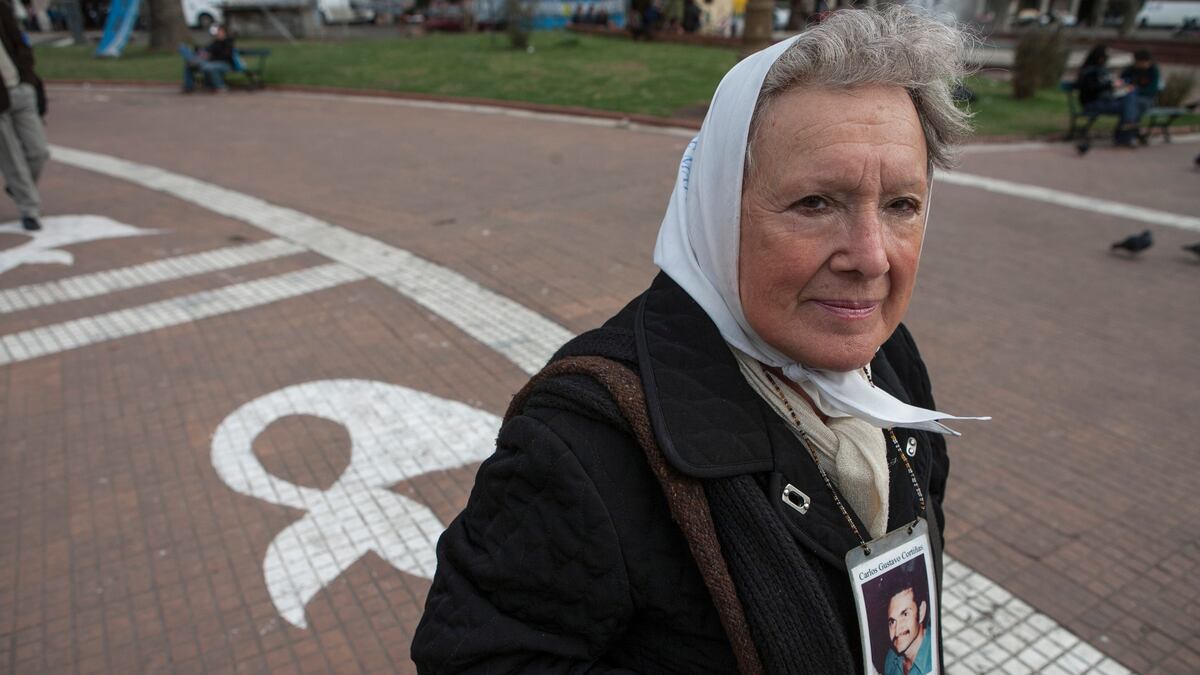Nora Cortinas, the mother of the Plaza de Mayo who fought against all injustices, died

Nora Morales de Cortinas, from Argentina, never stopped searching for a single day in her life for her eldest son, Gustavo, who disappeared on April 15, 1977 due to state terrorism. Norita, as the President of the Madres de Mayo was known in Argentina – the founding line – died this Thursday at the age of 94 without a trace. She asked other mothers about him in official offices and police stations during the dictatorship. Later, now in democracy, she appeared before Justice to try unsuccessfully to get answers from the soldiers in the dock. She never managed to find out where they had kidnapped him and what they had done to him. But that woman with a small stature and an immense smile always carried Gustavo’s image on her chest. It was her way of remembering him and reaffirming the memory of the Argentine people about one of the darkest pages in their history.
Cortinas underwent hernia surgery last week and was in intensive care for several days. “Fuerza Norita!” said thousands of messages flooded the network as this social psychologist and educator fought for her life. She died on Thursday, the day that for 47 years has been the date set for all the Mothers of the Plaza de Mayo to transform their pain into a collective struggle that has gone around the world.
“When I was a little girl I dreamed of princesses, I dreamed of taking my children on carousels. They were not as revolutionary as they are now. My name is Nora Morales de Cortinas, but everyone knows me as Norita”, this tireless fighter, present at any mobilization where human rights were attacked, loved to introduce herself to new generations.
She was born in Buenos Aires in 1930, the third daughter of a middle-class family. “She was funny, very pizpireta, mafalda type. She described herself in her biography, remembering that happy moment in her life: “They say I had fun.” Norita, the mother of all battles which was written by Gerardo Szalkovic. At the age of 19 she married her first and only lover, Carlos Cortinas, and soon had two sons: Gustavo and Marcelo. Although she had studied the trade of dressmaker, her greatest aspiration in the following decades was to become “a perfect housewife”, like many other Argentine women.
The day Gustavo disappeared, her life took a 180-degree turn. They left the domestic world they dominated and made their way into another unknown world, dominated by a brutal dictatorship. Only a year had passed since the coup and the military was kidnapping dozens of people a day as part of a systematic extermination plan that she and the other mothers stood by without thinking: their children’s lives were at risk.
“They called me at my house, they threatened me, they painted the whole neighborhood with the name of “terrorist mother”, he recalled talking about the first Thursdays when mothers would meet in the Plaza de Mayo, in front of the headquarters of the Argentine government. Given the prohibition to remain stationary, they began to circle around the pyramid to demand the presence of their children. Cortinas maintained this ritual until the end of his life. He went to the Plaza de Mayo every Thursday, except for those when travel or illness caused him trouble. The only long-term parentheses were the months of forced confinement of the pandemic.
Feminist commitment
In those marches, she always wore on her head the white scarf that the Mothers of the Plaza de Mayo turned into a global symbol against dictatorship. “The white handkerchief fights against injustice, against silence, against oblivion,” Cortinas defined it. In recent years, she began to tie another on her wrist, which she considered the heir to that tradition of struggle of Argentine women: the green scarf that feminists raised in favor of legal, safe and free abortion.
When democracy was restored in Argentina in 1983, the Cortinas were excited by the prospect of holding the military accountable for crimes against humanity. Speaking about the historic judicial process that took place in 1984, Nora Cortinas summarized, “The trial of the juntas took us out of the uncertainty that there would never be justice.”
However, two years later, internal divisions led Cortinas to distance himself from the head of the Madres de Plaza de Mayo group, Hebe de Bonafini, and create a more horizontal and less dogmatic organization: Madres de Plaza de Mayo – Línea Foundación. Its members, such as Cortinas, agreed to testify before the National Commission on the Disappearance of Persons (Conadep), approve, among other differences, the exhumation of corpses buried as NN and the compensation measures proposed by the Argentine state.
Owner of incredible vitality, Cortinas supported numerous causes both inside and outside Argentina. “That absence, that pain I feel every day, is the driving force of my commitment. That is why I accompany the struggle against all oppressions everywhere; because, simply, I want to change this unjust world,” argued the brave woman, already walking with the help of a stick, when asked where she got her strength from.
Her last public appearance was on March 24, when she marched to commemorate the anniversary of the last coup and shouted “Never again” with a crowd alarmed by the rise of speeches demanding state terrorism around Argentine President Javier Mailey. Yet she did not lay down her arms. She invited young people to keep alive the memory and the fight against injustice. “Many years from now I would like to be remembered with a smile and a cry that means everything I feel inside me: We will win!” A symbol of unwavering resistance, Cortinas knew how to build a bridge between memory and utopia.
(TagstoTranslate)Argentina
